Veronica Fernandez
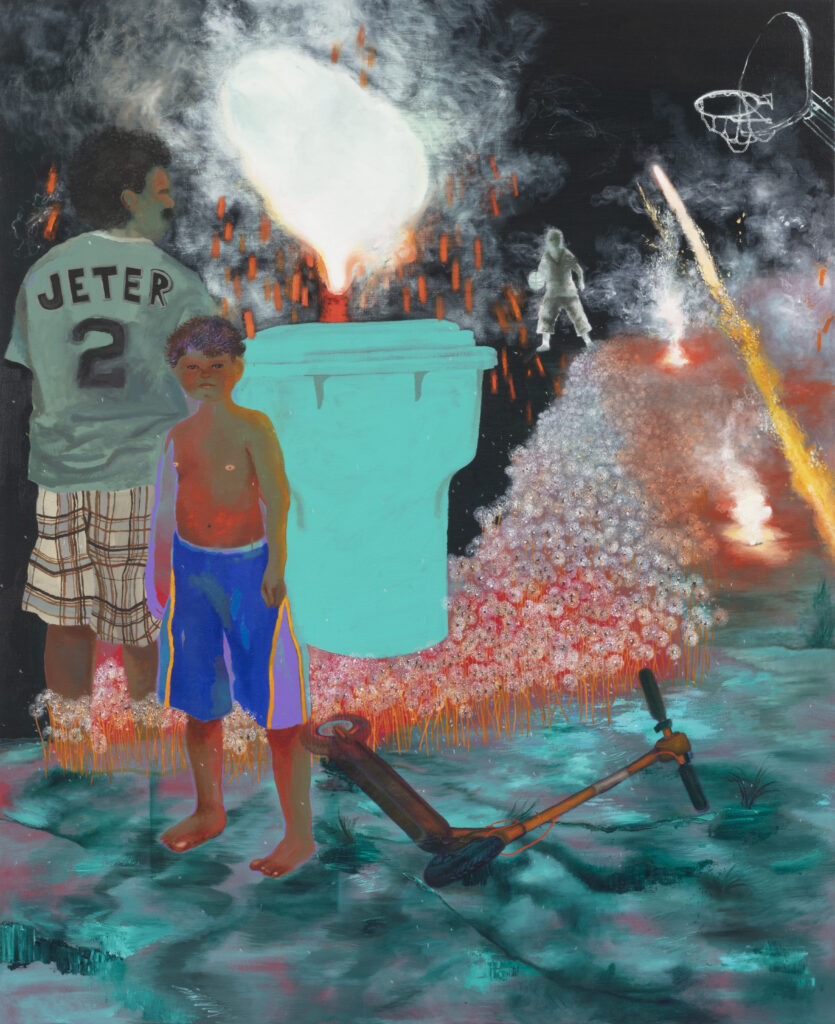
Veronica Fernandez, Before I’ve Existed, Now I’ve Lived
Collective intimacy and the impermanence of emotions
Veronica Fernandez (b. 1998) is a mixed media artist from New Jersey, who is currently working in Los Angeles, California.
Fernandez’s work investigates relationships between people and their environments: drawing from her own memories, she attempts to illustrate the complexities of domestic life, giving space to intimate moments of the everyday. Pulling from a variety of source material – from images of family members taken from photo albums to art historical references – Fernandez blurs personal recollections into emotive scenes that evoke a shared nostalgia, or a sense of colelctive recognition. She purposely reworks aspects that feel familiar into unfamiliar territory, taking what is hers and morphing it to better relate to a general consciousness. Drawing attention to the impermanence of emotions, Fernandez imbues her work with a sense of unfinishedness, allowing the narratives to remain open-ended for the viewer to make their own. This sharing of experience allows her to speak to a community and discuss our foundations as human beings: where we come from, what shapes us, and how we interact with one another.
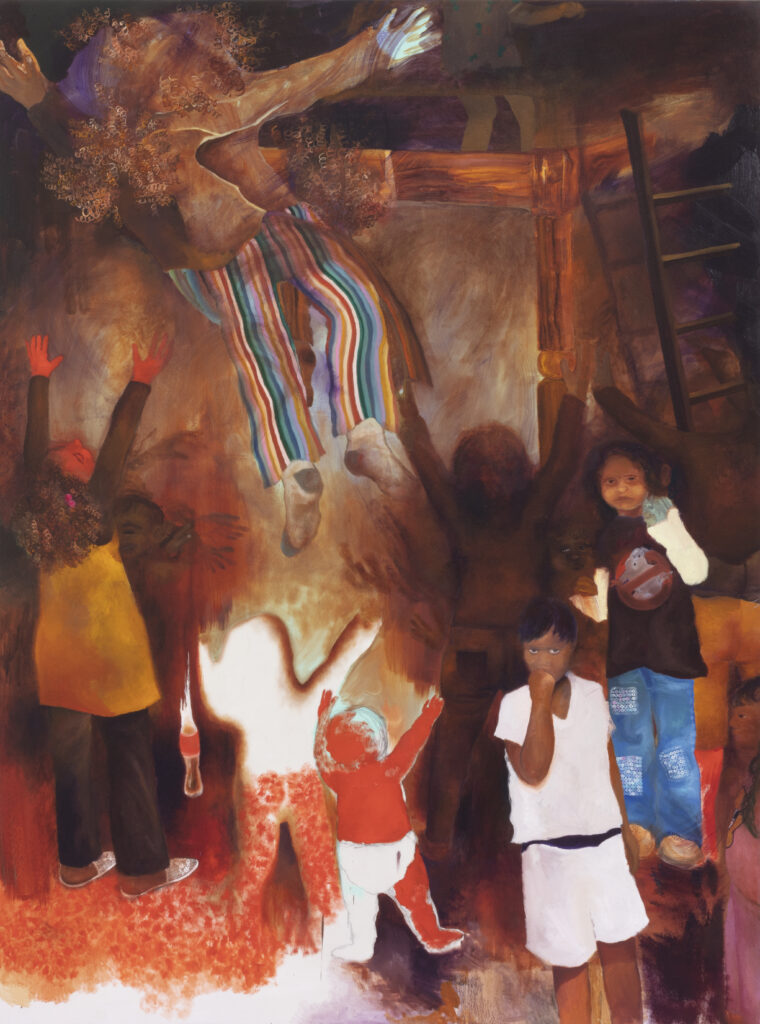
Veronica Fernandez, Trustfall
If you had to describe your body of work and what drives you to paint, what would you say?
“My body of work I would say is a form of storytelling about people and the places their bodies live through, depicting the impermanence of emotions.”
My initial drive to paint came from unpacking my own experiences growing up and spiraled really into these conversations about the human experience and how we adapt to change and the different moments in our lives, in the attempt to capture a fragment of intimacy and explore how it engages with others.
When looking at your work from a first glance two things hit immediately: size and color. Going back to this idea of intimacy and its actual space, could you tell me whether there is a link between the size of your works and this concept of entering one’s world?
I have always been in love with large scales. I started working on large scales in my New Jersey bedroom in 2019, testing wether I could transpose smaller sketches into larger surfaces. The intimacy that comes with a larger piece is different as opposed to when I work on my sketches and smaller pieces, which serve more as a form of personal release, like a page in a diary.
“My larger paintings deliver a sense of intimacy, of acceptance, that I feel absorbs people, almost as if it were a portal.”
Space is something that I never had growing up, it was never something set in stone, so for me, it was exciting to create art that could take up actual space when I finally had a little to take advantage of. I want others to become absorbed in these works about people that want to be heard, understood, and seen, so they can also see themselves and feel to some extent that they’re taking up space too.
Take me through your working process: how do you select a moment in time that you want to depict? Does it always start from a family album or is it also a moment you experienced, or the impression of someone you recently met?
My paintings primarily stem from my experiences, then most of the time I’ll find which photographs I think work best that I can deconstruct or pull from. When I think about starting a painting, there’s usually an essence, a general sense I want it to have, which then drives me to search for poses, gestures, facial expressions, colors, shapes, or objects from my references. The paintings usually consist of the combination of a few photographs (around 4-5), which shape the ground for a new sketch. It’s not until I get into the actual canvas that I can step back and see how to truly alter the first draft. As I work on different layers I usually incorporate different moments in time that I think will really bring a special element to the painting or change the original direction for the better.
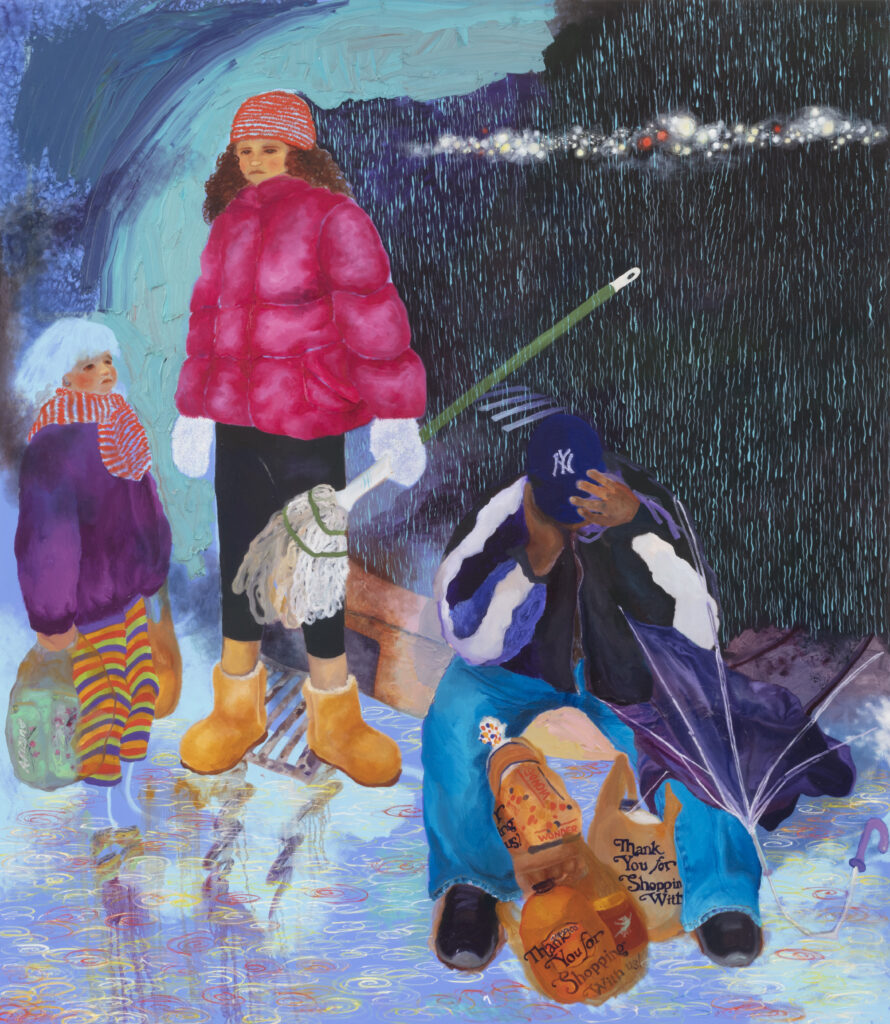
Veronica Fernandez, Watch A Leader Cry
The only moment where my process is more directly linked to a physical photographs is when I find a picture that I think is absolutely stunning, whether it be the colors within the image, the facial expressions or the composition. Then I start from that singular element and work around it.
The role of memory and recollection is thus pivotal to your work. How is your relationship with the past, and how do you transform it to something you engage with in the present?
Throughout my work process, I try to alter the familiar into unfamiliar territory. To create the works, I do reflect on my own experiences and engage with my personal memories, captured in photographs. The final idea I work with comes from stripping down these photographs and really reconstructing them and see what they transform into in the final imagery on canvas. When I work with my personal reference material and find myself altering the original picture I feel like I can see it at a distance and really step back and comprehend it.
“What once was a memory from my past can become a person from that memory in a new environment, with a new expression or new overall depiction, possibly surrounded by new figures I’ve created.”
The original story becomes thus a new idea that can be universally absorbed. On a formal level, I love using color, texture, and other techniques to bring a new contemporary palette to the soft pastel undertones of the older photographs I have.
I have noticed that the subject matter in many of your works are children. In relation to what you talked about before, the impermanence of emotions, do you think that childhood is key in this research towards change and possibility? Because youth is change in its purest form I guess – the openness to the future in both temporal and conceptual ways.
Children are definitely representative of openness to the future and have this kind of unpredictability hovering over them in relation to what can become of them in my work. The early years of our lives shape who we become. This sort of tabula rasa at one point everyone starts off with that slowly but shortly accumulates all these perceptions is very interesting to me. Everyone has their own specific stories, experiences, struggles, wins, losses, and even when we are too young to fully grasp the totality of every situation, we still feel and live through them.
“This whirlwind of emotions that come from the earliest point of our lives really tie into how human beings can adapt to their experiences later on in their lives, and reflect the layers that make up each and everyone.”
The child’s mind creates that first layer, and I think that incorporating them in my works llows me to play with these innate curiosities human beings have and how they navigate themselves in the world over time.
Titles are always very specific in your paintings. Contrary to many contemporary artists, you always seem to describe a work with precise accuracy of words. Could you tell me more about this particular attention?
The titles of the pieces stem from many places, sometimes I’ll hear my family members say phrases as forms of life lessons that I think are special, and I’ll remember them and think about how I can alter them to make them stronger, more accurate. Recently I’ve gotten into poetry, and will take a line or two I think can really stand on their own and apply it to paintings that I am already planning on making.
I think it’s important to utilize everything I can to get closer to the viewer, I want people who see my work to be able to envision themselves in it and allow it to touch them in some way or another. I think it’s interesting that very often titles are left out in gallery displays, and sometimes it isnt until you get the information written somewhere else that you can see another side to the work. I want people to be able to experience my work right away, not simply through just a title, but through what the title is to me, which is in fact poetry. I think this purposefulness can be a tool I can offer them as a chance to express that as an artist I am trying to have a conversation about people, and I am actively reaching out beyond the image.
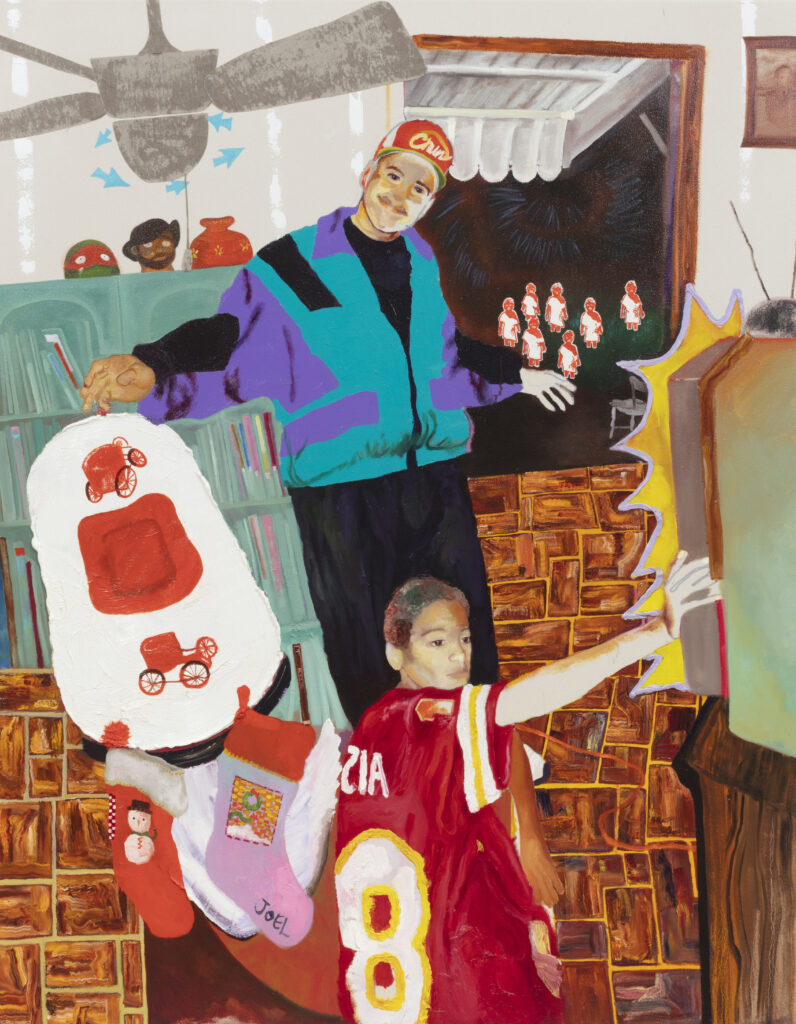
Veronica Fernandez, Superheroes
Talking about the viewer and ways to reach put to him/her, in which way do you try to combine the autobiographical source in your works with the outside world, in the attempt to leave space to the audience’s own gaze?
Sometimes the stories are represented through the imagery, and other times the painting evokes just the underlying emotions that come from those experiences, even though the actual source is not as recognizable. The figures in my work are depicted in different ways, some are more realistically rendered, others are recreated in odd colors, like full red, or many are altered to be irrecognizable through painterly gesture.
“Altering the identity of the figures helps me to create the distance from it that is so pivotal to its reconstruction, enough for me to continue it as anew.”
I also throw in a lot of made up elements into the paintings, to the point where the original ideas that inspired the painting become just a starting point, a vague compass, leaving the openness necessary for the viewer to incorporate his/her own elements into the story.
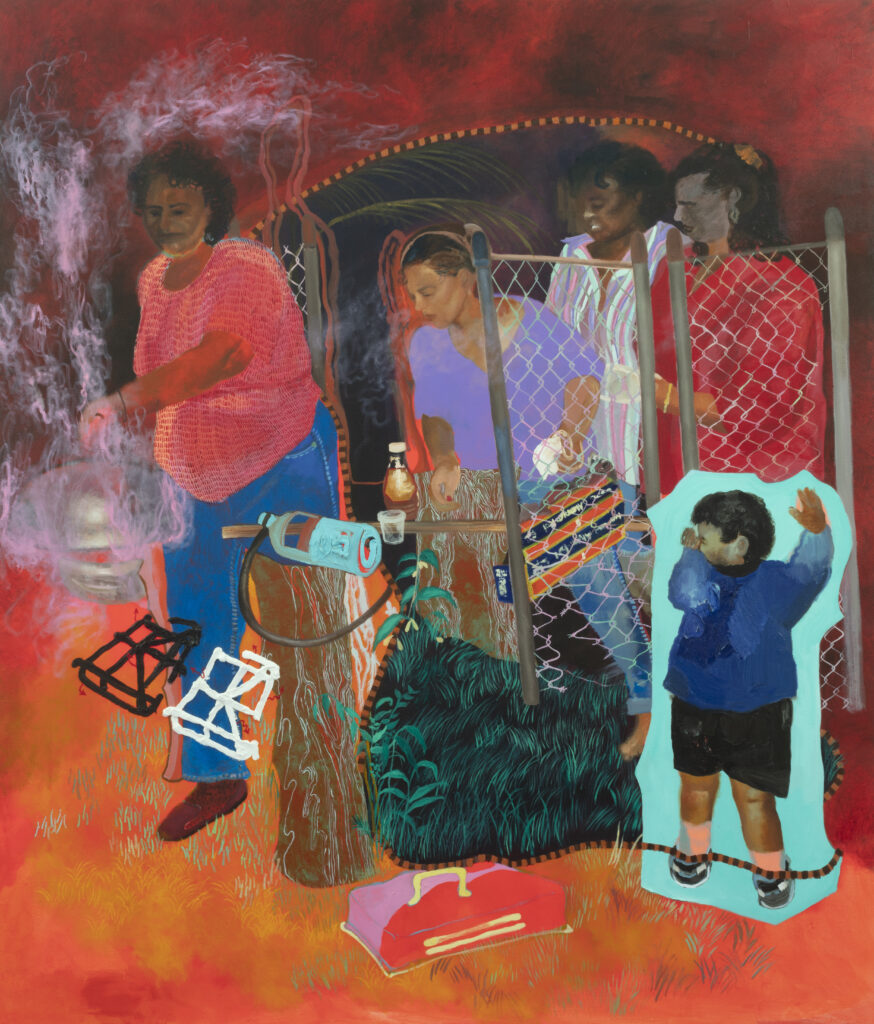
Veronica Fernandez, Through Steam (Lay Your Burdens Down)
In relation to the magazine’s theme –in our world – how do you think your work translates the sense of being in this time – from this current sociopolitical climate to this specific creative dimension?
We live in a strange world, where so many people feel that they are not being seen, heard, and overall understood. As I mentioned before, many of the figures in my work are asking to be understood or acknowledged in their positions too.
“I try to create an opportunity for compassion, curiosity and most importantly for conversation.”
Regardless of the way the paintings are received, I always try to make them accessible, to leave space for the other, to aknowledge the viewer and telling him/her that they are welcome, and their experiences matter.